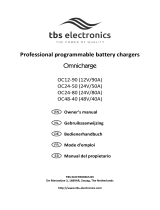
3
English
Table of Contents
Acknowledgement .................................................................................................. 1
Using this manual ................................................................................................... 1
Symbols ................................................................................................................. 1
Product Identification ............................................................................................. 2
1 Product Overview ................................................................................................ 4
1.1 Product List ............................................................................................................4
1.2 Name of each part .................................................................................................5
1.3 Specifications ........................................................................................................6
1.4 Instructions before Use .........................................................................................6
1.5 Precautions ............................................................................................................7
1.6 Declaration of Conformity .....................................................................................8
1.7 Statement ...............................................................................................................9
1.8 Disposal and environment ................................................................................. 10
2 Operation........................................................................................................... 11
2.1 Check the Battery Status .................................................................................... 11
2.2 Using a single battery ......................................................................................... 11
2.2.1 Connecting the Battery to the Machine................................................... 11
2.2.2 Turning on/off the battery ........................................................................ 12
2.2.3 Charging the Battery ................................................................................. 13
2.3 Using Multiple Batteries ..................................................................................... 14
2.3.1 Connecting Batteries in Parallel .............................................................. 14
2.3.2 Connecting Parallel Batteries to the Machine ........................................ 15
2.3.3 Turning on/off the Batteries in Parallel ................................................... 16
2.4 LED Indicator ....................................................................................................... 17
2.5 Buzzer .................................................................................................................. 18
3 Troubleshooting ................................................................................................ 19
4 Transportation ................................................................................................... 21
4.1 Transportation ..................................................................................................... 21
4.2 Storage ................................................................................................................ 21
5 Routine Maintenance ......................................................................................... 22
6 Warranty terms .................................................................................................. 23
6.1 Out of Warranty ................................................................................................... 24
6.2 Limited Warranty Claim Procedures .................................................................. 25




















